5 New Kitchen Furniture Material Wonders For Your Next Interior Design
Overview
Explore the avant-garde world of kitchen furniture design, from liquid metal’s allure to the eco-friendly charm of mushroom bricks.
Design creates culture. Culture shapes values. Values determine the future.
Robert L. Peters
In the world of interior design, the choice of materials can make or break a space. Whether you’re a dedicated homeowner aiming to revamp your kitchen or a seasoned interior design professional keen on pushing the boundaries of creativity, your choice of materials stands as a cornerstone that profoundly influences the visual appeal, functionality, and ecological sustainability of your project.
The use of experimental materials in interior design has become a captivating avenue for those who crave innovation and uniqueness.
They embody the cutting edge of design, holding the promise of crafting spaces that transcend mere functionality, embracing both captivating aesthetics and a deep commitment to environmental sustainability. Imagine kitchens adorned with gleaming liquid metal surfaces or cabinets crafted from sustainable mushroom bricks, blending aesthetics with sustainability.
In this blog post, we set out on an enthralling journey into the unexplored realm of experimental materials within the domain of interior design, with a particular focus on kitchen furniture. Here’s a sneak peek of what awaits you: Liquid Metal in Interior Design – Join us as we delve deep into the enchanting universe of liquid metal and uncover its transformative potential for your kitchen furniture. From countertops to cabinet handles, we’ll show you how this experimental material can transform your kitchen space.
Mushroom Bricks as a Sustainable Choice: Discover the eco-friendly revolution with mushroom bricks and how they’re breathing life into kitchen furniture. We’ll explore their versatility and how they align with sustainable design trends. Beyond the Basics: We won’t stop at liquid metal and mushroom bricks. Explore other experimental materials and how they’re changing the face of kitchen furniture. Smart glass, biodegradable textiles, and more await your creative touch.
Liquid Metal In Interior Design
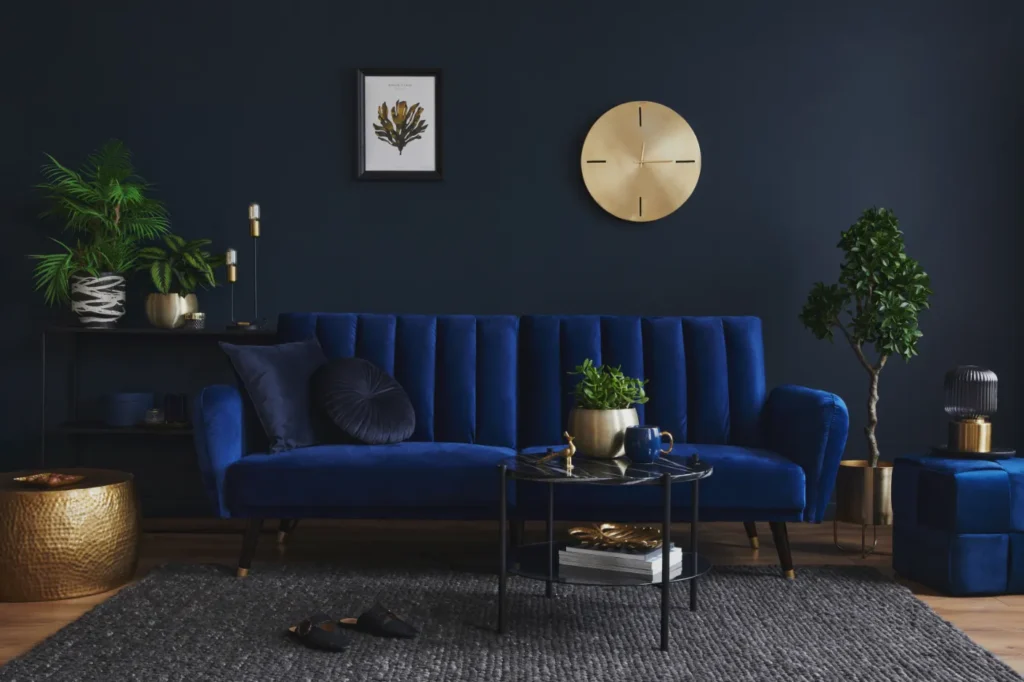
When we talk about experimental materials in the realm of interior design, one fascinating contender that emerges is liquid metal. This innovative material represents a versatile and captivating choice for enhancing your kitchen furniture and space.
Liquid Metal As An Innovative Material
Liquid metal represents a distinctive alloy, commonly crafted from a combination of metals such as gallium, indium, and tin. What distinguishes this material is its remarkable characteristic of retaining a liquid state even at room temperature, rendering it highly pliable and adaptable for various applications in interior design. This malleability allows designers to create extraordinary, sculptural forms that can be applied to various aspects of kitchen furniture.
Use Cases And Examples Of Liquid Metal
Liquid Metal Countertops: Liquid metal countertops can give your kitchen a futuristic and luxurious look. Imagine a sleek, shimmering surface that seamlessly blends with your cabinetry, creating a stunning focal point in your kitchen.
Liquid Metal Cabinet Handles: Small details can make a big difference. Liquid metal cabinet handles offer a unique and artistic touch, turning mundane cabinets into works of art. They can add a touch of opulence and personality to your kitchen furniture.
Liquid Metal Backsplashes: A liquid metal backsplash can be a striking addition to your kitchen. Its reflective properties can amplify the available light, making your space appear more spacious and vibrant.
Advantages And Disadvantages Of Using Liquid Metal
Advantages:
Aesthetic Appeal: Liquid metal is undeniably captivating, with its reflective and captivating surface that adds a touch of luxury to your kitchen.
Versatility: It can be applied to various elements of kitchen furniture, allowing for creative and customized designs.
Durability: Liquid metal is celebrated for its robustness, exhibiting a capacity to endure the rigors of daily use, rendering it a fitting choice for spaces with heavy foot traffic.
Disadvantages:
Cost: Liquid metal can be relatively expensive, and may not fit every budget.
Maintenance: It requires careful maintenance to retain its luster, as it can be prone to scratches and tarnishing.
Weight: Liquid metal features can be heavy, which might necessitate strong structural support for some applications.
Tips For Incorporating Liquid Metal In Kitchen Furniture
Select the Right Elements: Choose specific kitchen furniture elements where liquid metal can make the most impact, such as countertops, handles, or backsplashes.
Balancing Act: Ensure that liquid metal complements your overall kitchen furniture design, balancing its luster with other materials and colors in your space.
Maintenance Routine: Establish a regular cleaning and maintenance routine to keep your liquid metal elements in pristine condition.
Incorporating liquid metal into your kitchen furniture design can result in a space that exudes modernity and sophistication. While it may come with certain costs and maintenance considerations, the end result is often a kitchen that stands out as a work of art in your home. So, if you’re seeking to infuse your kitchen with a touch of elegance, don’t hesitate to consider the potential of liquid metal.
Mushroom Bricks In Interior Design
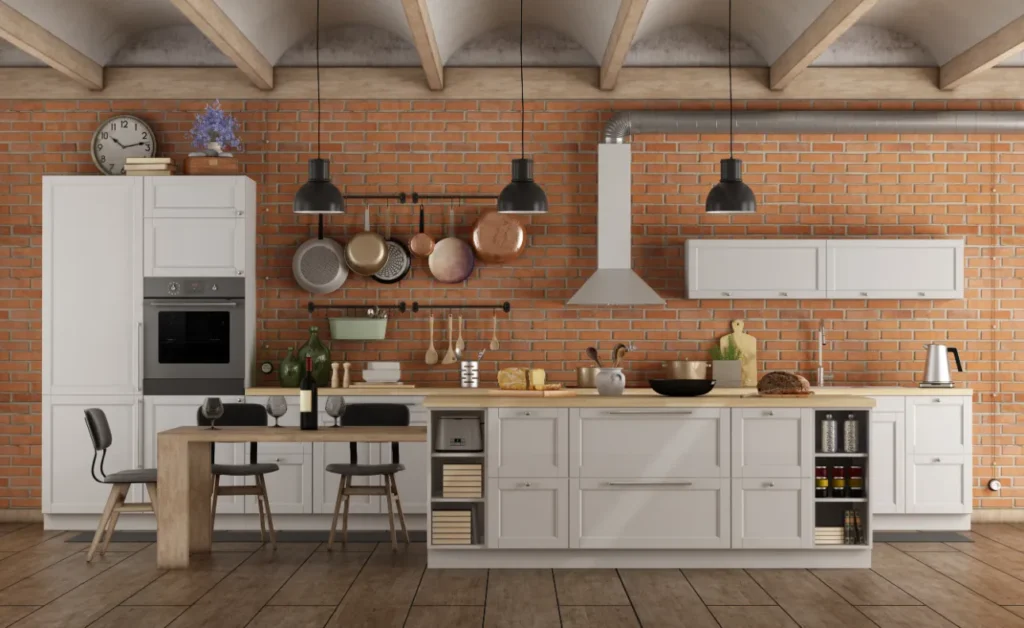
Mushroom bricks, a captivating and eco-conscious experimental material, have been causing ripples in the realm of interior design. These innovative bricks are crafted from mycelium, the root structure of mushrooms, and they offer a sustainable and versatile alternative for enhancing your kitchen furniture and beyond.
Mushroom Bricks As An Experimental Material
Mushroom bricks are a remarkable departure from traditional building materials. They’re composed of mycelium, a dense network of fungal threads. This mycelium is grown on organic waste materials such as agricultural byproducts or wood chips, creating a solid, lightweight, and sustainable material.
Use Cases And Examples Of Mushroom Bricks
Mushroom Brick Wall Coverings: Imagine adorning your kitchen walls with mushroom brick coverings, creating a natural, earthy aesthetic. Utilizing these bricks in your kitchen furniture design can infuse texture and personality, bestowing your culinary space with a cozy and natural ambiance.
Eco-Friendly Cabinets: Mushroom bricks can be employed to craft eco-friendly cabinet doors. They bring a unique, sustainable touch to your kitchen furniture. These cabinets are not just environmentally conscious but also stylish and functional.
Mycelium Countertops: Mycelium-based countertops offer a green alternative. They can be an ideal choice if you’re looking for a surface that’s both durable and environmentally friendly. These countertops can be seamlessly integrated into modern kitchen designs.
Environmental Benefits Of Using Mushroom Bricks
The environmental advantages of mushroom bricks are substantial:
Sustainability: These bricks are produced from renewable resources, reducing the environmental impact associated with traditional construction materials.
Biodegradability: At the end of their life cycle, mushroom bricks can be safely returned to the earth, reducing the burden on landfills.
Energy Efficiency: The production of mushroom bricks typically consumes less energy compared to traditional brick manufacturing, contributing to a lower carbon footprint.
Considerations For Using Mushroom Bricks In Kitchen Furniture Design
Structural Support: Mushroom bricks are lightweight, which means they may not be suitable for load-bearing applications. Ensure that your design accounts for proper structural support.
Moisture Resistance: Mushroom bricks may require additional treatment or sealing to make them resistant to moisture and humidity. This is especially crucial in kitchens where exposure to water and humidity is common.
Aesthetic Harmony: Ensure that mushroom bricks align with the overall aesthetics of your kitchen. They work wonderfully in eco-friendly or rustic-themed designs but may need careful integration into other styles.
Embracing mushroom bricks in your interior design projects can lead to a space that marries sustainability and creativity. While considering these bricks for your kitchen furniture, you’re not only choosing innovative materials but also making an environmentally responsible choice. So, if you’re seeking a kitchen that’s not just stylish but also eco-conscious, mushroom bricks could be your path to sustainable, aesthetically pleasing, and functional kitchen furniture design.
Other Experimental Materials In Interior Design
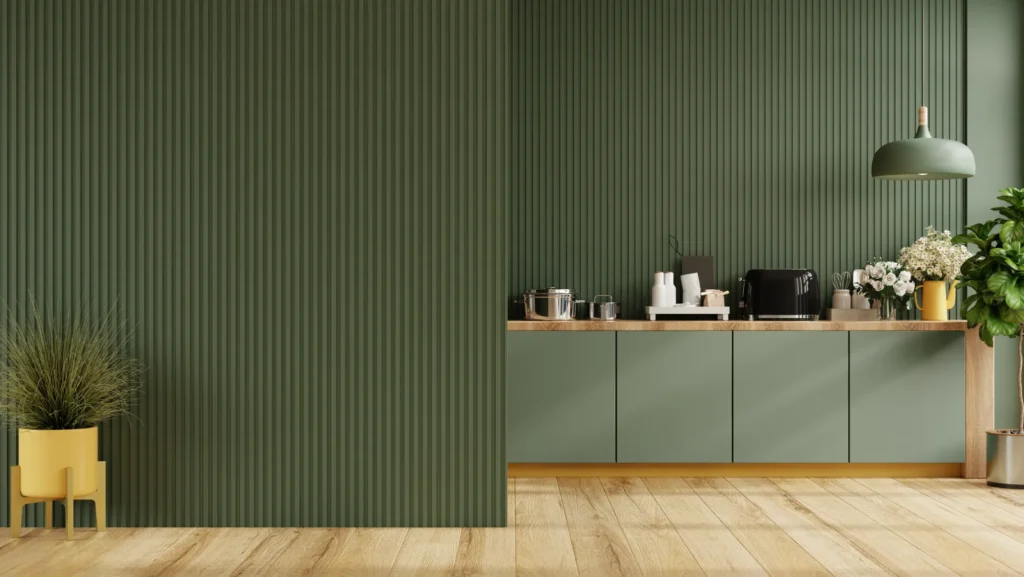
Beyond liquid metal and mushroom bricks, there exists a captivating array of experimental materials that are reshaping the landscape of interior design. Let’s explore some of these materials and their potential applications, including their benefits in the context of kitchen furniture.
Diverse Array Of Experimental Materials
The realm of interior design is experiencing a revolution driven by advancements in material science. This wave of innovation has ushered in a rich assortment of experimental materials, each characterized by its distinct properties and versatile applications within the domain of interior design. These materials are challenging conventions and offer fresh perspectives on what is achievable in the world of design.
Examples Of Materials
Smart Glass: Materials such as Smart Glass exemplify this innovative wave. Smart Glass is a revolutionary material that empowers glass surfaces to effortlessly shift from opaque to transparent at the mere touch of a button. Imagine having smart glass cabinet doors in your kitchen. You can obscure the contents when not in use and instantly reveal your beautiful kitchenware when desired.
Biodegradable Textiles: Environmentally conscious designers are turning to biodegradable textiles to create curtains, upholstery, and even kitchen linens. These textiles break down naturally, reducing environmental impact and making your kitchen a more sustainable space.
Bamboo: Bamboo, though not new, is gaining traction as a sustainable alternative for kitchen furniture. It’s strong, renewable, and imparts a natural, calming ambiance to your kitchen.
Potential Applications And Benefits Of These Materials
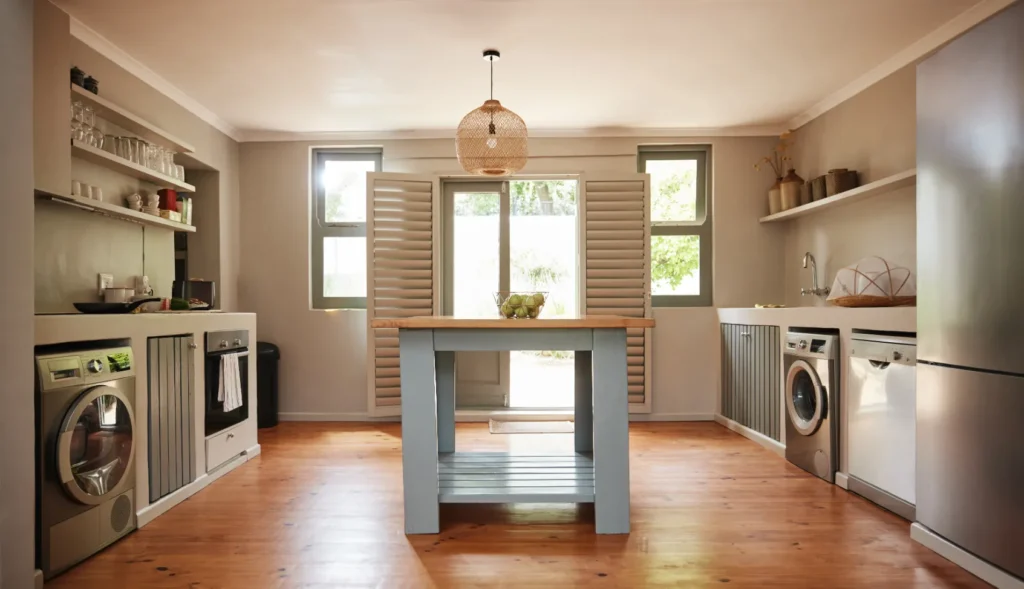
Smart Glass: Besides the aesthetic appeal, smart glass offers privacy, energy efficiency, and protection against UV rays. These benefits can significantly enhance the functionality of kitchen cabinets and windows.
Biodegradable Textiles: The adoption of biodegradable textiles fosters a more health-conscious indoor atmosphere. These textiles are naturally hypoallergenic, require minimal upkeep, and actively support the principles of sustainable living.
Bamboo: In the realm of kitchen furniture, bamboo stands as a paragon of eco-friendliness, accompanied by exceptional durability and resistance to moisture. This renders it an excellent option for kitchen cabinets, countertops, and flooring.
The integration of these experimental materials into your kitchen design opens doors to a world of possibilities. Smart glass can make your kitchen more versatile and energy-efficient, biodegradable textiles can enhance your kitchen’s sustainability, and bamboo can bring a touch of nature indoors while maintaining durability.
Within the perpetually advancing realm of interior design, the incorporation of these pioneering materials not only nurtures artistic ingenuity but also bolsters the endeavor to craft environmentally aware and highly practical living environments. As you explore these materials, you’ll discover that experimental materials hold the key to unlocking the full potential of your kitchen furniture and interior design as a whole.
Sustainability And Experimental Materials
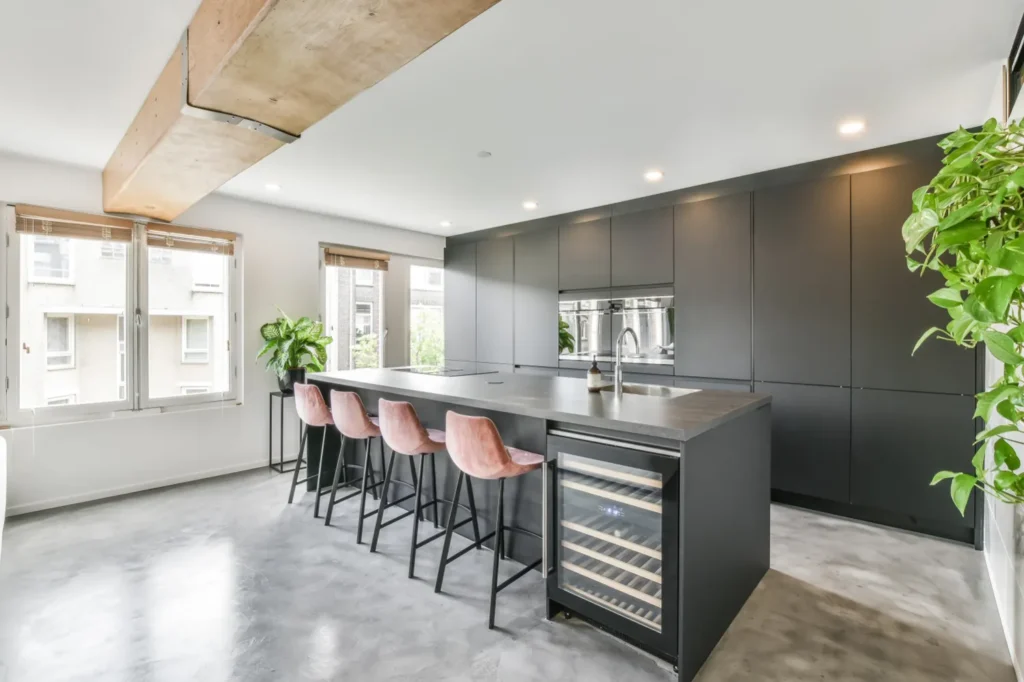
In the world of interior design, the concept of sustainability has transcended being a mere buzzword and has emerged as a driving force behind innovative choices, including experimental materials. Here, we delve into the pivotal role sustainability plays in interior design, how experimental materials can be harnessed to be eco-friendly, and offer practical tips for achieving harmonious and green designs, even in the realm of kitchen furniture.
The Significance Of Sustainability In Interior Design
In contemporary interior design, sustainability stands as a pivotal pillar. It extends beyond the realm of aesthetics; it signifies the conscientious creation of spaces. Designers and homeowners are progressively embracing the imperative to reduce their environmental impact. This shift yields a multitude of advantages, from curbing energy consumption to safeguarding the Earth for forthcoming generations.
How Experimental Wonder Materials Can Be More Eco-Friendly
Sourcing and Production: Many experimental materials are derived from renewable sources, which reduces the environmental impact of their production. For instance, mushroom bricks use mycelium grown on agricultural waste, making them a sustainable choice for kitchen furniture.
Energy Efficiency: The production processes of certain experimental materials, like smart glass, often consume less energy compared to traditional alternatives. This energy efficiency contributes to a reduced carbon footprint.
Biodegradability: Materials like biodegradable textiles inherently decompose when they reach the end of their useful life, diminishing waste and alleviating the strain on landfills. They provide a more sustainable solution for kitchen furnishings.
Tips For Achieving Eco-Friendly Design Using Experimental Materials
Integration of Sustainability: Prioritize the selection of experimental materials that align with your sustainability goals. For instance, if you aim to reduce your kitchen’s environmental impact, opt for mushroom bricks or bamboo kitchen furniture.
Balanced Design: Harmonize your choice of experimental materials with the overall design. For example, if you’re using biodegradable textiles for curtains, ensure they complement the color scheme and style of the kitchen.
Efficient Space Planning: Maximizing the functionality of your kitchen can contribute to sustainability. Use experimental materials like mycelium countertops to create multifunctional kitchen spaces, reducing the need for additional furnishings.
Eco-Friendly Accessories: Consider eco-conscious accessories such as energy-efficient lighting, recycled hardware, and low VOC (volatile organic compounds) paints to further enhance the sustainability of your kitchen.
Regular Maintenance: Regular maintenance is essential to prolong the lifespan of your experimental materials. Proper care can prevent the need for replacements, reducing waste.
By weaving sustainability into the fabric of interior design, and by conscientiously selecting eco-friendly experimental materials, you can create a kitchen that’s not just aesthetically pleasing but also aligned with your values of responsible living. These materials offer opportunities to infuse your space with innovative, green choices, making every corner of your home a reflection of your commitment to a more sustainable future.
Conclusion
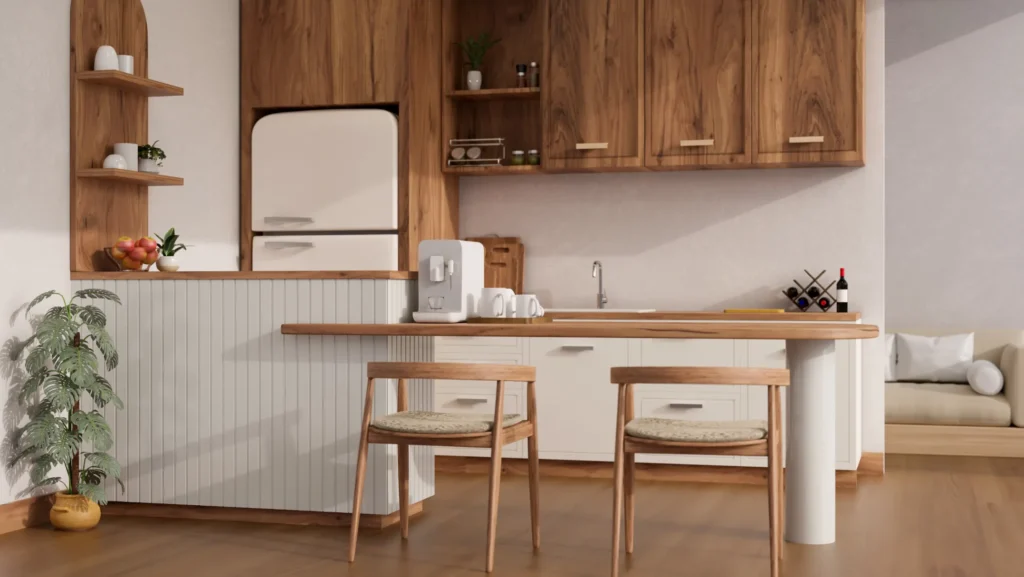
In the dynamic realm of interior design, the adoption of experimental materials is catalyzing a significant metamorphosis. This transformation presents homeowners and design experts with extraordinary prospects for fashion spaces that seamlessly blend aesthetic allure and sustainability. We’ve embarked on a fascinating journey through the realm of these innovative materials, with a particular focus on their application in kitchen furniture. From liquid metal to mushroom bricks and a host of other experimental materials, the possibilities are boundless.
Our exploration began by understanding the importance of materials in interior design, recognizing that the choices we make have far-reaching consequences. The introduction of experimental materials is revolutionizing the way we perceive interior design, embracing the unique, the sustainable, and the futuristic. The innovative materials we’ve delved into transcend mere novelty; they are truly avant-garde, revolutionizing the aesthetics, functionality, and environmental consciousness of our living environments.
Liquid metal, with its mesmerizing appeal, offers a glimpse into a future where kitchen furniture becomes both functional and a work of art. Its glossy surfaces, whether in the form of countertops or cabinet handles, add an undeniable touch of opulence. Mushroom bricks, created from mycelium, embrace eco-conscious living. They transform kitchen walls, cabinet doors, and countertops into organic, sustainable elements that make us feel closer to nature.
Beyond these remarkable materials, there’s a whole spectrum of experimental options. Smart glass can change our perspectives on transparency, providing privacy and energy efficiency. Biodegradable textiles contribute to a healthier indoor environment, while bamboo emerges as a symbol of eco-friendliness and durability in kitchen furniture.
The overarching theme of sustainability is what binds all these materials together. We’ve recognized sustainability as a cornerstone of modern interior design, a driving force that shapes our choices and impacts our planet’s future. Embracing forward-thinking materials that curtail waste, conserve energy, and prioritize environmental well-being, we nurture the development of spaces that extend beyond visual charm, embodying eco-consciousness and functionality.
This journey of discovery also revealed that achieving harmony in interior design, whether it’s with liquid metal, mushroom bricks, smart glass, or biodegradable textiles, requires a delicate balance. Each choice contributes to a unique narrative, and by integrating these materials mindfully, we can achieve a cohesive, aesthetically pleasing, and sustainable design.
As we draw the curtains on this exploration of experimental materials in interior design, we invite you to embrace the possibilities they offer. With these materials, you can craft a future where kitchen furniture and interior spaces transcend mere functionality, becoming a celebration of creativity, sustainability, and innovation. The choices you make today can transform your living space into a testament to responsible and forward-thinking design, a space where beauty meets sustainability, and where your values are brought to life in every element. So, take the plunge, and design the future with these remarkable, transformative materials.
The White Frame is not just another interior design and build firm, we are proud to offer you the professional service levels of global standards and a deep respect for both contemporary and traditional interior design, Headquartered in Gurgaon, and extend our services across diverse cities, including Gurgaon, South Delhi, Delhi-NCR, North India, Mumbai, Chandigarh, Jaipur, and Agra.
Explore some of our work here!


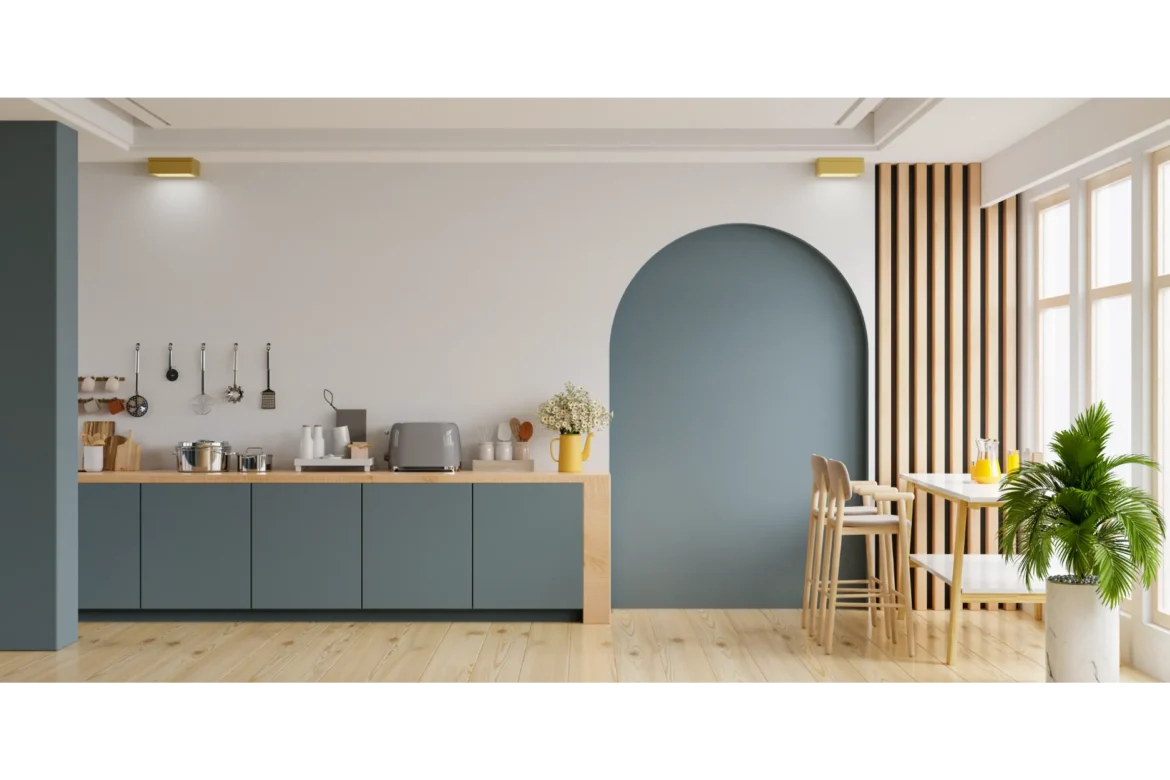

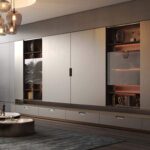
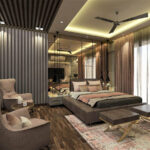
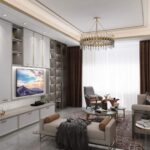
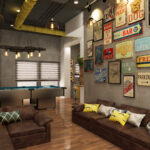
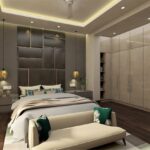
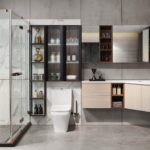
1 Comments
Thank you for your sharing. I am worried that I lack creative ideas. It is your article that makes me full of hope. Thank you. But, I have a question, can you help me?